|
|
ADDRESS AT THE NATIONAL BAL SHREE HONOUR FUNCTION 2005
21-04-2005 : NEW DELHI
Creativity enriches human life
I am indeed delighted to participate in the National Bal Shree Honour Function 2005 organized by National Bal Bhavan. I congratulate all the children who are getting the awards in creative arts, creative writing, creative performance and creative innovation in science. I greet the organizers, artists, poets, creative writers, art lovers and the distinguished guests. I am happy to note that this National Bal Shree Honour scheme, selects the best children dispersed in different parts of the country through a three-tier selection process including a psychological test for assessing the creative ability of the child. This selection, I am sure, will definitely enable the early recognition and nurturing of our children in multi-dimensional creative activities which is vital for promoting the growth of the youth. I would like to talk on the topic ?Creativity enriches human life?.
Creativity commences in children with primary education
Since the Honorable Minister for Human Resource Development Shri Arjun Singhji is with us, I would suggest that the creativity has to be built-in the primary schooling of children in the age group of 5 to 11. This is the period the learning time of our children should be devoted to creative lessons like building model aircraft, rockets, spacecrafts, cars, tractors, chemical experiments, electronic devices, computers, paintings, sculptures, music and dance. That means our present syllabus has to be reduced and the learning process should concentrate on creative lessons, creative products in the class rooms. Can we bring down the bag weigh of the primary school students?
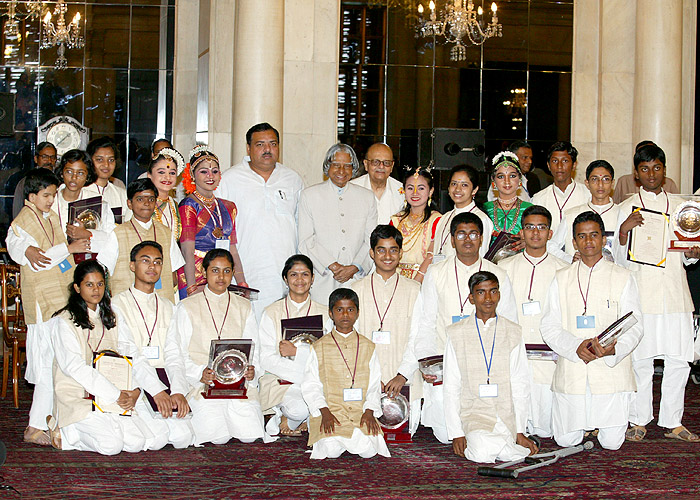

Creativity
I was thinking about creativity.
1. How it is created?
2. What is the source?
3. Is it genetic? Or
4. By learning, can it be created?
Father, Mother, Teacher, home environment and school environment are the influencing factor in creating creativity among the children.
Dear Children, can you tell me three important events of 20th century that changed the human life in this planet? Any one of you?
CHARLES DARWIN, who propounded the theory of ?Natural Selection?. He made us think differently about how the evolution of human being took place. Thomas Alva Edison, who invented electricity, which is, indeed revolutionized every field of science and technology and human life. Electricity is indeed the foundation for the growth of human life today. Mahatma Gandhi, whose Ahimsa Dharma movement against racial discrimination in South Africa and fought against British rule in India through non-violence. These three events of 20th century are the results of creative mind.
Look at the sky. We are not alone. The whole universe is friendly to us and conspires only to give the best to those who dream and work. Like, Sir CV Raman looked at the sea and the sky, and questioned why the sea should be blue? This led to the birth of Raman Effect, he found the blue of the sea was due to the molecular scattering of light and was not a case of reflection of the sky in water as most people imagined.
One of the major breakthroughs in science in the 20th century that had an everlasting impact on the human kind is the most celebrated work of Einstein. Einstein explained, for the first time in 1905, the principle of the inertia of energy as a universal law. The famous energy equation E=MC2 was given to the world. This equation has become the basis for converting matter into energy ? giving birth to a new avenue called the nuclear energy for producing electricity to light up our cities and villages.
After this event, Einstein looked up to the space and saw millions and millions of galaxies and he noticed that we belong to one of the smallest galaxy. In the smallest galaxy, sun is the smallest star. In this smallest galaxy, we have 9 planets and the planet in which the human race lives is an insignificant planet. But yet we have all types of lives, including human life. This led to creative astronomers like Copernicus, Galileo and Kepler who had given a new dimension to the world of astronomy. Today we take it for granted that earth is a globe, orbiting around the sun, and the sun orbits in the Milky Way. We are not alone. Human race is not a unique race in the universe. All the technological advancements we have today are the outcome of scientific exploration of scientists of earlier centuries. At no time, man was beaten by problems. He strives continuously to subjugate impossibility and then succeeds. At this point of time, I would like to recall the award function held on 22 March 2005, of Shankar?s International Children?s Competition for 2004, where I saw the creative work of children coming from different parts of the world.
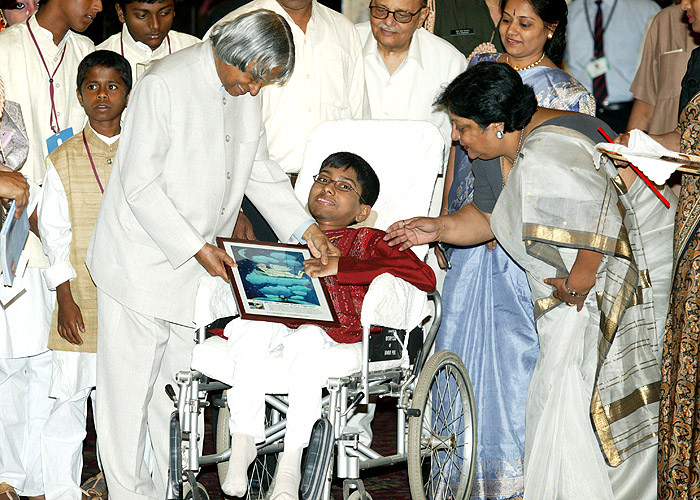

Beautiful minds
I would like to share some of the creative work presented in that competition. I was very happy to see, the German Girl Anthea Neums, bringing out her imagination of how the season of Easter looks like in the rural environment; the bright colors that she has chosen reminded me of my home town on the seashore, where I spent my childhood days. In the same book, 14 year girl Supraja Chakravarthy, from India narrates a story about the homely middle class morality and how the votes are purchased during an election. It is clear that the young mind wants a change.
Aardhra Krishna (13), has worn her thinking cap on and let her imagination fly. She has visualized how the earth will look like around 3000 AD. In her imagination, the citizens of the earth are forced to migrate to Mars and have made Mars the home to a flourishing civilization. This advanced civilization, which was man made comes suddenly under threat created by nature in the form of an asteroid of Jupiter. The asteroid from Jupiter was coming towards Mars and Mars was in danger of extinction. The scientists on Mars come up with a very innovative plan of a barrage of nuclear cannons to attack the oncoming asteroid. The bombardment destroys the asteroid and the year 3000 A.D. sees a Martian civilization surviving from the fury of the nature by scientific innovation. What a beautiful scientific thinking of Aardhra Krishna?
I was amazed about the poem written by a 12 year old girl Anna Sinyakova from Russia ? ?Never think of illness?. I always believed that there will be some problem or the other while doing important tasks, but problems should not become the master. My advice particularly to the young children is that you should defeat the problem and succeed. The same thoughts are echoed by Anna Sinyakova from Russia. She sends out a very strong message of encouragement and advice through her poem that you must have the courage to face any disease to keep up the human well being.
I liked the painting of Savidhya Kumari Premasundera, a ten year old girl from Sri Lanka. The way she has imagined the scene of the fishing and the fishermen, is testimony to the alertness and the observation capability of the young mind. Kenya?s thirteen year old boy recounts his personal experience of his maiden flight which was hijacked. The entire incident had been so deeply engraved in the young mind. The boy has been very eloquent in bringing out his experiences and emotions in his write-up. Now I would like to talk to you about the Evolution of enriched societies.
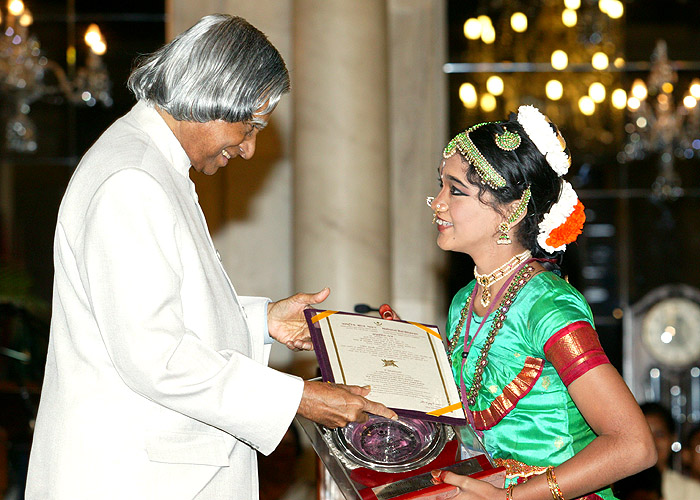

Evolution of enriched societies
We have multiple societies in every nation starting from agricultural society, industrial society, and information society leading to knowledge society. During the 20th century, societies underwent a change from the agricultural society, where manual labour was the critical factor to the industrial society, where the management of technology, capital, and labour provided the competitive advantage. The information era was born in the last decade. Networking within the country and with the other nations and the software products drove the economies. Some of the nations including India utilized this opportunity. In this decade we are just entering into knowledge society era.
The uniqueness of knowledge society is enriching the information society with innovation and value addition of products. The knowledge also enables value addition to the other three societies. In knowledge society, knowledge is the primary production resource instead of capital or labour. I would like to discuss with you how we can work together to make our societies enriched by knowledge and transforming them into knowledge society.
Knowledge can create a comprehensive wealth for the nation and also improve the quality of life, in the form of better health, education, infrastructure, and other societal needs. The ability to create and maintain a knowledge society infrastructure, develop the knowledge workers, and enhance their productivity through the creation, growth, and utilization of new knowledge, will be the key factor in deciding the prosperity of this knowledge society. Whether or not a nation has developed into a knowledge society is judged by the way, it creates and deploys knowledge in the sectors like ICT, Manufacturing, Agriculture, Services, Education and Healthcare.
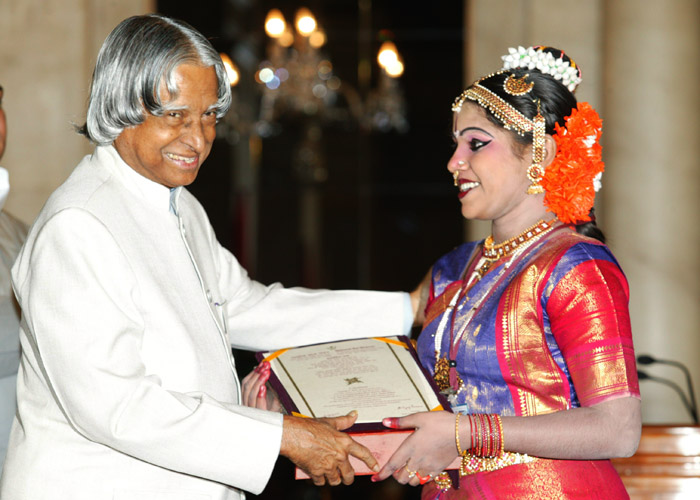

Societal transformation
The whole purpose of education in a country like India is to develop and enhance the potential of our human resource and progressively transform it into a knowledge society. The knowledge society will be a society producing products and services that are rich in both explicit and tacit knowledge, thus creating value added products. The real capital of this knowledge society will be its knowledge workers. The society will be highly networked to create knowledge intensive environment along with enabling process to efficiently create, share, use and protect knowledge. Our education system should re-align itself at the earliest and promote creativity and innovation among youth and equip them with skills to participate in the societal transformation, since these characteristics will be needed in producing, finding innovative applications and marketing in a competitive environment. Since this gathering has young scientific innovators, I would like to talk about the future challenges in science ? Nano Science.
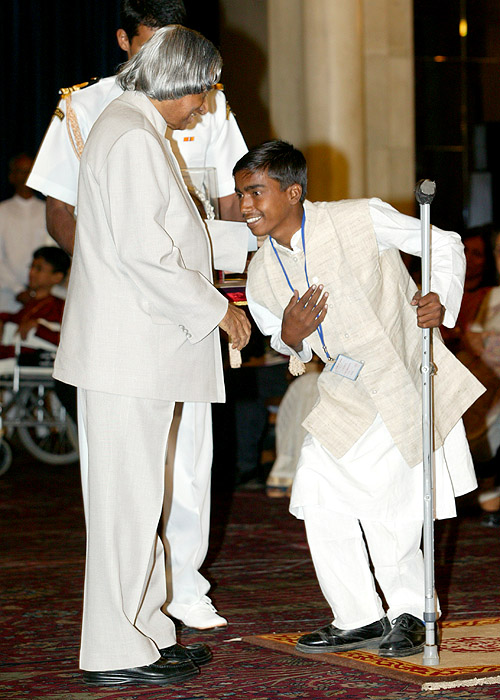

Nano Science
The statement of the Nobel laureate physicist Prof. Richard Feynman, ?There is plenty of room at the bottom?, illustrates the exciting possibilities in the emerging area of Nano-structured materials. Understanding and exploiting them is the big challenge being pursued by scientists today.
Devices and materials have been shrinking rapidly over the past few decades and it is estimated that by 2010, the size of computers would be of the order of Nano, which is equivalent to ten to the power of minus nine. In other words it will be one thousandth of a micro meter or one billionth of a meter.
When I look at the deep and beautiful colors on the feathers of the peacock in the Rastrapati Bhavan, I have often wondered how even after many years, the color of the peacock feather does not fade away. I recall as a young kid, I used to keep peacock feathers in my books. This phenomenon of long lasting original color to the peacock has come from the God?s own creation of Nano materials, coated in a peacocks feather and they diffract light, which gives us the rich colors. Observation of the nature and the role of science in understanding it from our research in Nano sciences can be converted into a technological product by using the same or similar Nano materials which gave the natural color for the peacock feather, as part of our shirts, sarees, fabric and apparels. It is a welcome destination for science to mature into technology and become a product of utility for the society.
Nano science gives scientists the ability to manipulate matter at the atomic and molecular levels. Nano materials are not about miniaturization. When the materials are in the Nano regime, it opens up a very interesting challenge to basic physics and chemistry. This challenging research world over has demonstrated that by making the same material in the Nano scales, you could get materials with unimaginable, and useful properties. This means, in the near future, scientists will be able to develop methods to make very minute materials for a variety of applications.
In medicine, for example, it would be possible to detect cancerous tumors when they are very miniscule or only a few cells in size. This knowledge, in turn, could lead to early detection and possible cure of the person with minimal discomfort. The ?Nano-computer?, which has been developed by scientists at the Weizmann Institute of Science, Israel, is one of the best examples of these minute products and their potential. The biological nano-computer is a device that is pieced together using a trillion living cells, acting together and with the capability to perform billion operations per second. This exciting device is a combination of the enormous crunching power of the computers and biological molecules that can be programmed to perform different tasks in an autonomous way. Now I would like to discuss about the convergence of technologies.

Convergence of Technologies
The technologies are converging together to provide a quality of service (QOS) with the reduced infrastructure setup. The information technology and communication technology have already converged leading to Information and Communication Technology (ICT). Information Technology combined with bio-technology has led to bio-informatics. Now, Nano-technology is knocking at our doors. It is the field of the future that will replace microelectronics and many fields with tremendous application potential in the areas of medicine, electronics and material science. When Nano technology and ICT meet, integrated silicon electronics, photonics is born and it can be said that material convergence may happen. With material convergence and biotechnology linked, a new science called Intelligent Bioscience will born which leads to a disease free, happy and more intelligent human habitat with longevity and high human capabilities. Convergence of bio-nano-info technologies can lead to the development of nano robots. Nano robots when they are injected on a patient, my expert friends say, it will deliver the treatment exclusively in the diseased area and then the nano-robot gets digested as it is DNA based product.
Convergence of IT, aerospace and Nano technologies will emerge and revolutionize the aerospace industry. This technological convergence will enable building of cost effective low weight, high payload, and highly reliable aerospace systems which can be used for inter-planetary transportation.
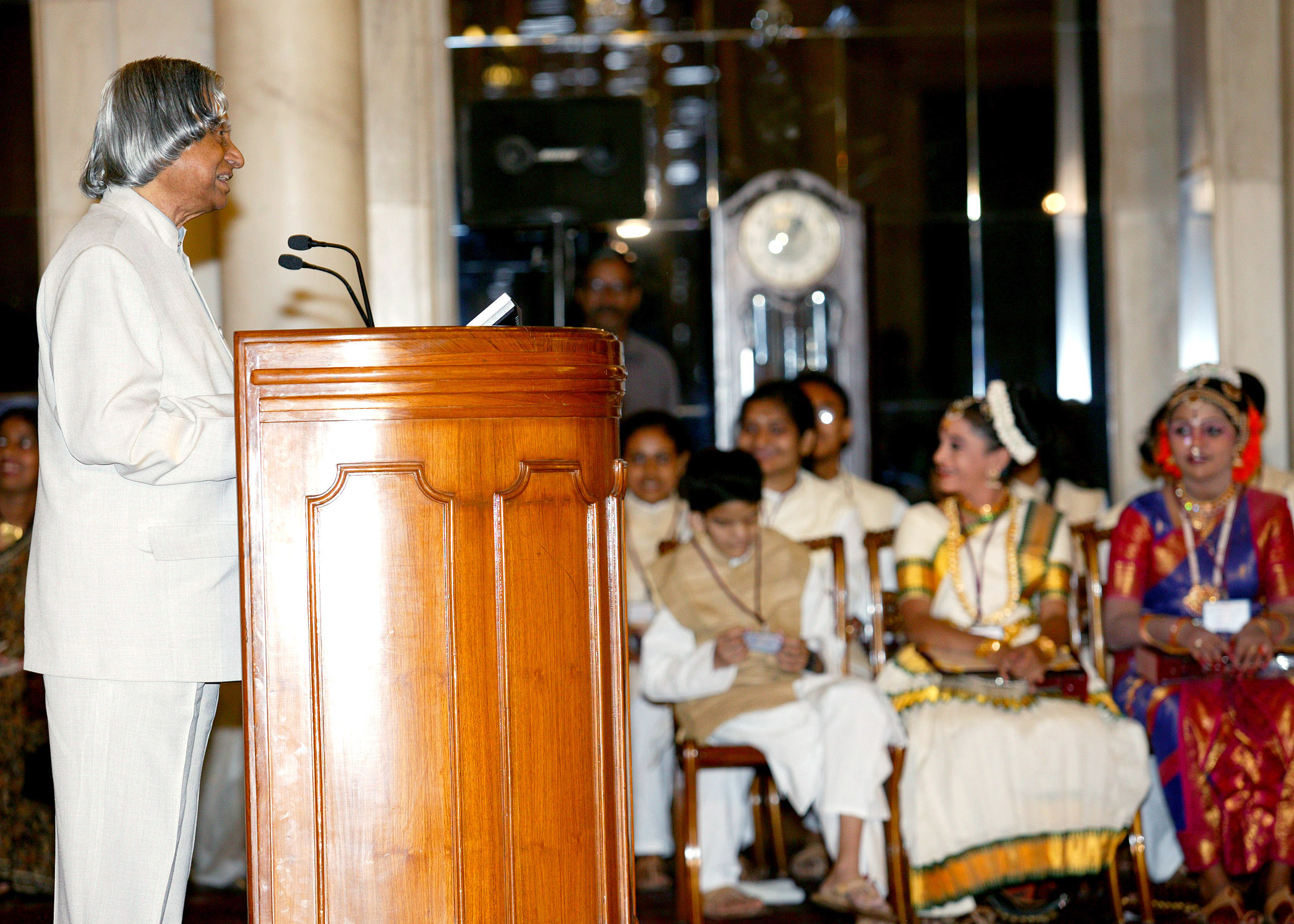

Conclusion
Over the last ten years National Bal Bhavan has selected and recognized the creative abilities of over hundred and forty two children and this year they have selected twenty two children for the National Bal Shree Honour. I consider this activity as a very important contribution in promoting creativity among our youth. To bring out the hidden creativity among the youth in our rural areas and to promote the creativity amongst the selected candidates, I would suggest following action for implementation by the National Bal Bhavan.
1. At present, there are 73 Bal Bhavans in the country spread in district and capital cities. However, I understand that there are only 11 Kendras in the interior areas. I would suggest the creation of Bal Bhavans in the rural areas for promoting creativity and innovation among our rural youth.
2. Teachers are our great asset. If we have to promote creativity among our children, we need creative teachers. To enable this, it is essential to specially recognize ten creative teachers as a part of best teachers award being given on the teachers day every year. Recognizing creativity also requires creative mind.
3. A research cell may be created as part of Bal Bhavan to study the creative potential among children and suggest educational and environmental interventions needed in our schools to promote creativity and innovation among all our children.
4. Since the Bal Bhavan authorities have assembled all the hundred and forty two earlier award winners in this function, I would suggest they may like to ask these awardees to give a brief write-up on the suggestions they would like to make for inculcating, sustaining and improving the creativity in the chosen area among our youth. In future they can introduce a feed back column in their website for periodic interaction between the awardees and the Bal Bhavan Research Cell.
5. There is an institution called National Innovation Foundation situated at IIM, Ahmedabad; Prof. Anil K. Gupta is the Vice Chairman. I have attended two award functions honouring grass root innovators selected by this foundation. The innovation comes from farmers, innovation comes from craftsmen, innovation comes from artisans, and innovation comes from workers of cottage industry. For this innovation award, there are no age criteria. He has identified the innovators through the Honeybee network. I would suggest, the National Bal Bhavan can invite Prof. Anil K. Gupta and listen to his experiences on rural innovators.
Once again my congratulations to all the award winners and my best wishes to the members of the Bal Bhavan in their mission of promoting creativity among the youth of our nation.
May God bless you.
<<Back
|
|